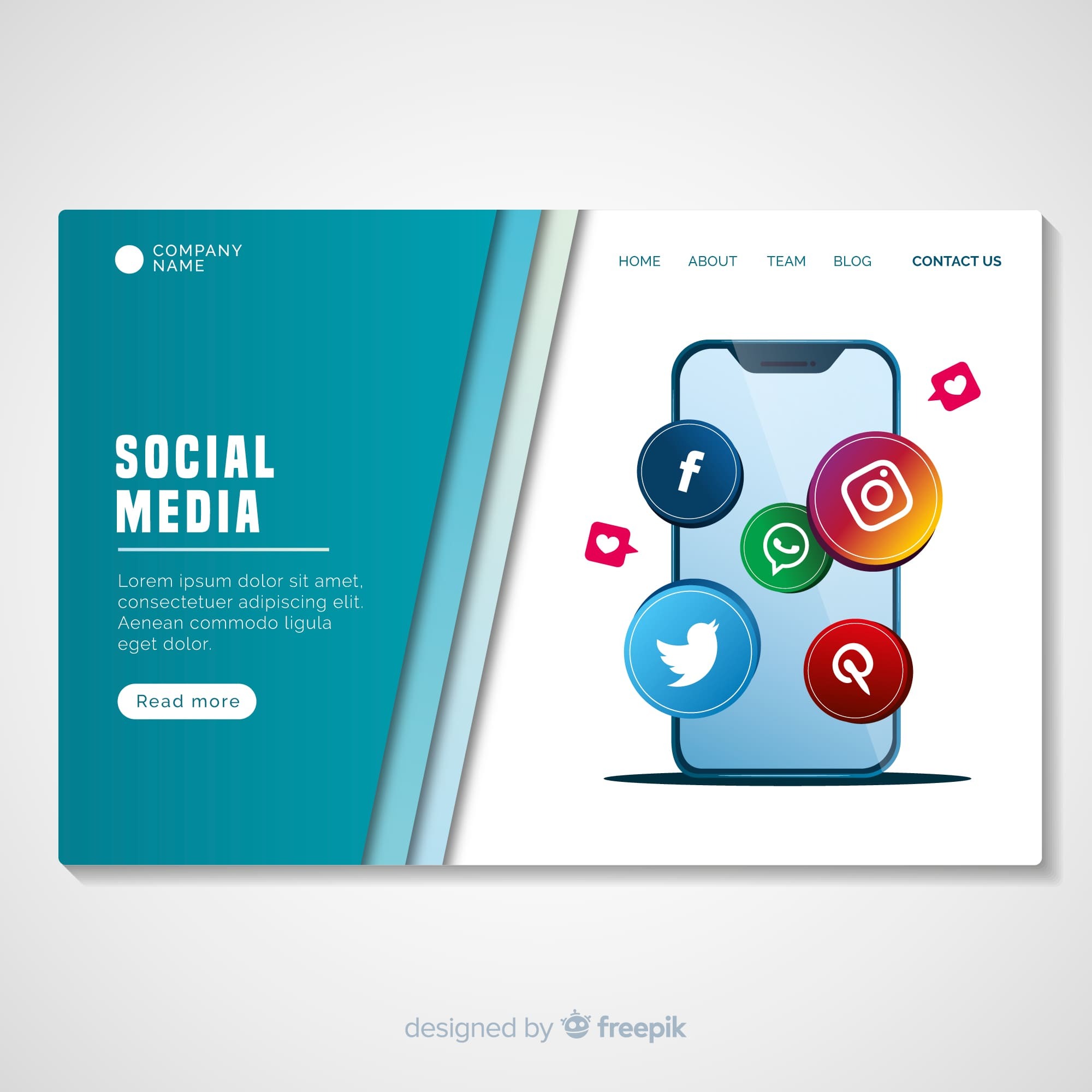
In 2025, social media has evolved far beyond simple sharing—it’s now the most powerful growth engine for modern businesses. With more than 5 billion active users worldwide, platforms like TikTok, Instagram, LinkedIn, and YouTube have become digital ecosystems for discovery, conversation, and conversion.
Social media marketing for business is no longer about posting pretty visuals; it’s about building systems that turn engagement into measurable outcomes. Every view, comment, and click represents a potential customer, and every piece of content contributes to your brand’s long-term equity.
At Future Digital, we see this transformation every day. Startups and DTC brands that once treated social media as a side channel are now using it to drive full-funnel growth—building brand awareness, generating leads, and nurturing loyal communities that convert.

Social media marketing for business means using data-driven storytelling, creative testing, and audience insights to achieve specific business goals. It’s a mix of art and analytics—a balance between creative expression and measurable performance.
Effective social media marketing involves:
The result is a marketing approach that feels organic but performs with precision. Instead of guessing what works, you use social data to build scalable strategies that drive consistent ROI.
Creating a successful social media marketing strategy starts with clarity, not complexity. Below is a five-step process that turns creativity into business performance.
Start by aligning social objectives with real business outcomes. Instead of aiming for “more followers,” define goals such as increasing qualified leads, driving eCommerce conversions, or boosting brand awareness by a specific percentage. Use SMART goals—specific, measurable, achievable, relevant, and time-bound.
For example: “Increase website traffic by 25% through LinkedIn engagement in Q2.”
Understanding your audience is non-negotiable. Use tools like TikTok Creator Search, SEMrush, or Meta Audience Insights to uncover who your followers are, what they care about, and how they interact online. Combine demographic and psychographic insights to understand motivations and behaviors.
The more you know your audience’s language, pain points, and humor, the better your content will perform. Social media marketing only works when it speaks the audience’s dialect.
Don’t try to be everywhere. Focus on platforms that align with your audience and goals:
It’s better to post strategically on two platforms than to burn out trying to master six.
Use content pillars to stay consistent—such as education, entertainment, testimonials, and behind-the-scenes content. Follow the 80/20 rule: 80% of your content should inform or entertain, while 20% can promote.
Plan your cadence realistically. If you can only post three times a week, focus on quality and timing. Tools like Later, Buffer, or Meta Business Suite can help you batch and schedule posts efficiently.
Remember: social media is not a broadcast—it’s a conversation. Ask questions, create polls, and respond promptly to engagement.
Use analytics dashboards to track progress. Focus on engagement rate, CTR, conversion rate, and follower growth. Review performance monthly to understand what’s resonating and where improvement is needed.
At Future Digital, we recommend combining platform insights with tools like Google Analytics 4 to connect content activity to site conversions. The more feedback loops you build, the faster your social media system evolves.

Social media doesn’t work in isolation—it’s a key pillar of your entire marketing mix. When connected with other channels, it amplifies impact across the funnel.
The smartest businesses connect data from social media, paid media, and lifecycle marketing to measure full-funnel ROI. Social insights don’t just tell you what’s popular—they tell you what drives conversions.
A Series A women’s wellness startup partnered with Future Digital to build a sustainable social media strategy that connected brand storytelling with measurable growth.
Before working with us, the company posted irregularly and relied on discount-based ads. Within three months of implementing a structured strategy—anchored in audience data, storytelling, and video testing—the brand achieved measurable results:
By aligning creative with analytics, the brand built a community that converted, turning engagement into real business growth.
The right tools transform social media from chaos to clarity. Below are key platforms that empower teams to manage, analyze, and optimize their content efficiently:
These tools help businesses focus on what matters most—strategy, creative, and growth.
Even experienced marketers fall into traps that limit performance. Avoid these common mistakes:
Brands that treat social media as a performance system—testing, measuring, and optimizing—are the ones that scale sustainably.
The next chapter of social media marketing for business is powered by intelligence—both human and artificial.
AI tools are helping marketers generate content ideas, predict engagement outcomes, and automate routine tasks. Social commerce continues to evolve, turning platforms like Instagram and TikTok into storefronts where discovery and purchase happen instantly.
Community-driven marketing is also rising in importance. As algorithms favor authentic engagement over vanity metrics, brands that cultivate loyal, interactive audiences will outperform those chasing impressions.
According to Statista, global social media ad spend will reach $277 billion in 2025, accounting for nearly one-third of all digital advertising. This growth reflects how deeply social channels are integrated into business strategy.
At Future Digital, we believe the future of social media lies in blending creative storytelling with measurable systems—where every post, video, or comment contributes directly to business outcomes.
What’s the best social media platform for small businesses?
It depends on your audience. Instagram and TikTok are great for visual brands, while LinkedIn is ideal for B2B companies. The right platform is where your customers spend the most time.
How often should businesses post on social media?
Consistency matters more than frequency. Most brands succeed with 3–5 high-quality posts per week, supported by daily engagement and stories.
How can I measure ROI from social media?
Use tools like Meta Business Suite or Google Analytics 4 to track conversions, website traffic, and engagement. Focus on metrics tied to business outcomes, not just vanity metrics.
What kind of content performs best?
Educational, entertaining, and authentic content drives the strongest engagement. Mix how-to videos, testimonials, and community posts with strategic promotions.
Can small teams manage social media effectively?
Absolutely. With the right tools and clear strategy, even small teams can run scalable social systems that deliver measurable results.
Social media marketing for business in 2025 is about combining creativity with performance. Brands that use data, storytelling, and experimentation to guide their social strategy are the ones driving real ROI—not just likes or followers.
At Future Digital, we help founders and growth teams design scalable, data-backed social systems that convert engagement into measurable business outcomes.
Explore how we can help your brand grow:
For industry data and insights, visit Statista’s Global Social Media Reports and explore tools from Meta for Business.